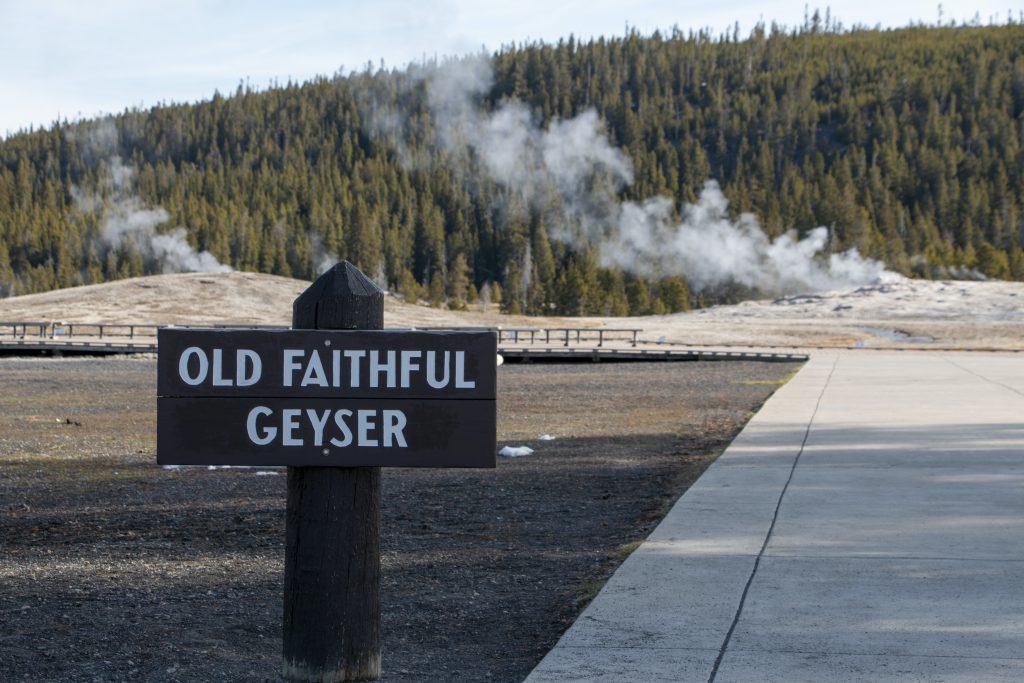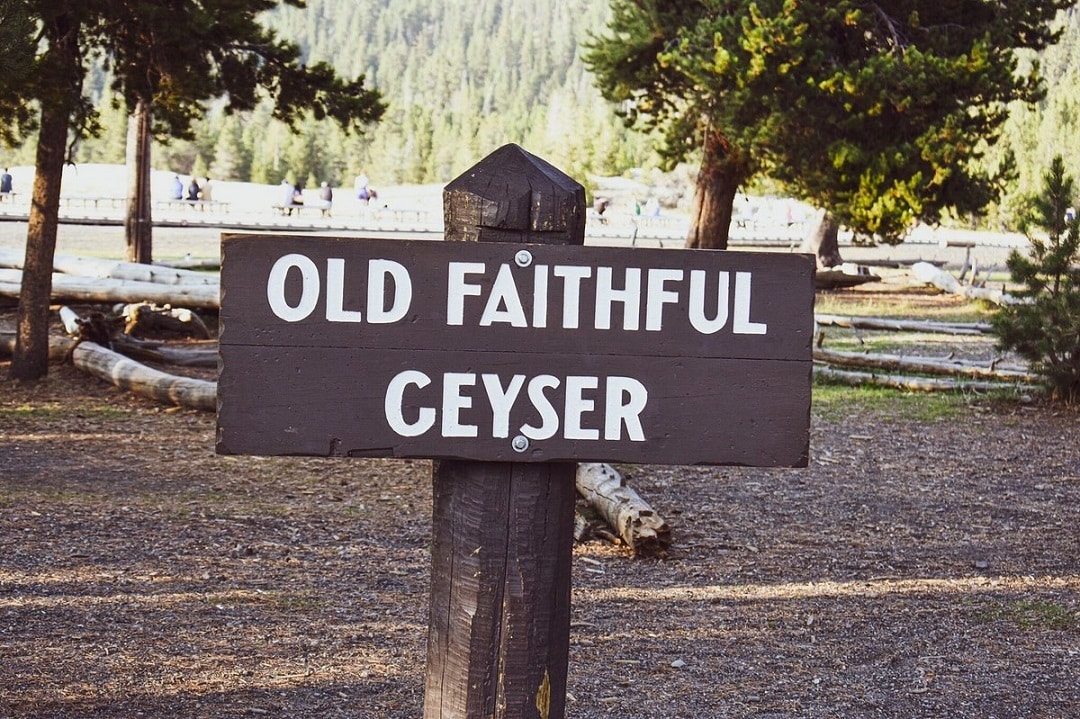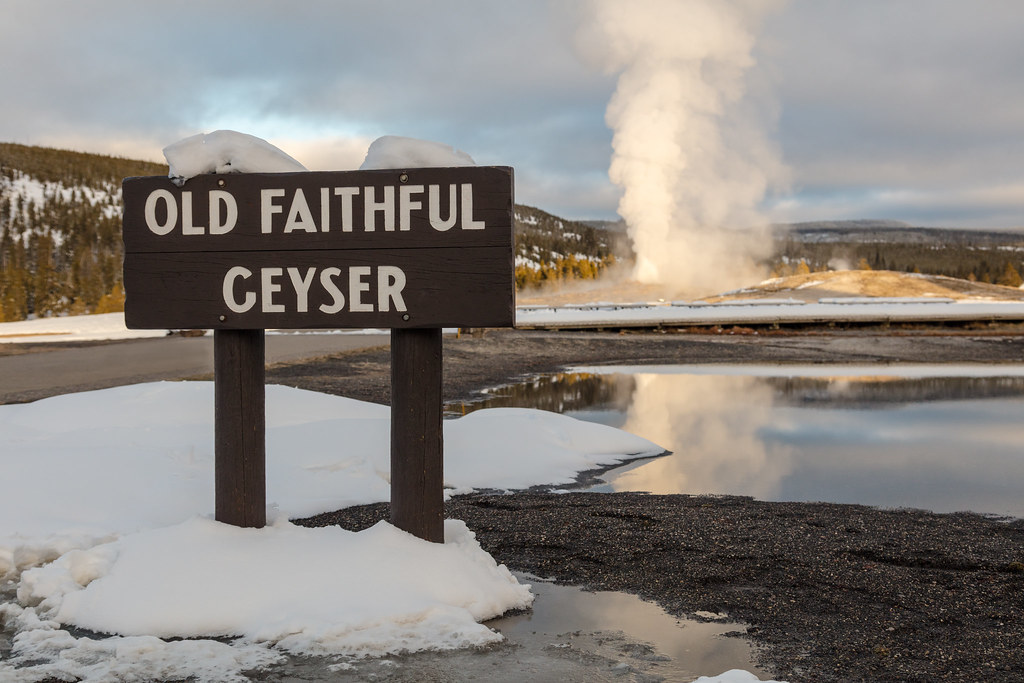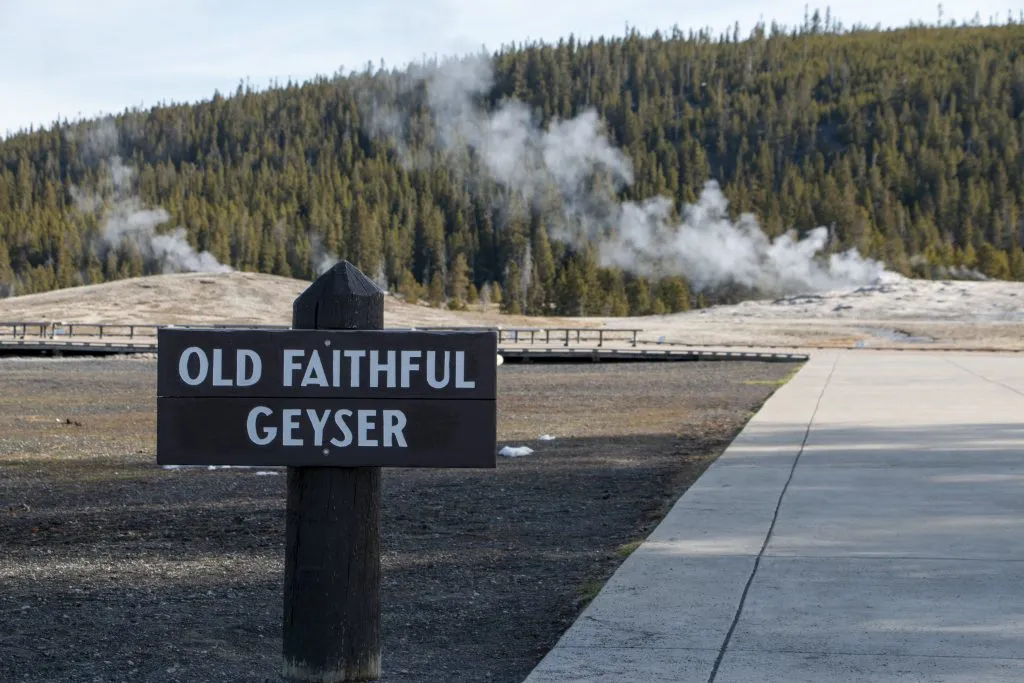Planning your journey to America's first national park? This comprehensive guide covers everything you need to know about how to get to Yellowstone National Park, from the best airports and driving routes to essential travel gear. Whether you're flying in from across the country or embarking on a scenic road trip, I'll share insider tips and personal experiences to help you reach this natural wonderland with confidence. Visit NatureGuests.com for more outdoor adventure guides.
Understanding Yellowstone's Location and Access Points

When I first started researching how to get to Yellowstone National Park, I was amazed to discover that this massive wilderness spans across three states. Yellowstone covers nearly 3,500 square miles, with the majority (96%) located in northwestern Wyoming, while small portions extend into Montana (3%) and Idaho (1%). This geographic spread means you have multiple access points to choose from, each offering unique advantages depending on your travel plans.
The park features five entrance stations that serve as gateways to this natural wonderland. The North Entrance near Gardiner, Montana, remains open year-round and is often called the "original entrance" due to its historical significance. The West Entrance near West Yellowstone, Montana, is the most popular among visitors, offering easy access to Old Faithful and other iconic attractions. The South Entrance connects through Grand Teton National Park, making it perfect for those planning to visit both parks.
Understanding the seasonal accessibility of each entrance is crucial for planning your visit. During winter months, only the North Entrance and Northeast Entrance remain accessible to regular vehicles, while other entrances may be closed due to heavy snowfall. The East Entrance through Cody, Wyoming, typically opens in May and provides access to Yellowstone Lake and the park's wildlife-rich areas.
From my experience visiting all five entrances, each offers distinct advantages. The Northeast Entrance via the scenic Beartooth Highway provides the most dramatic mountain views, though it's only accessible from late May through mid-October. Weather conditions can change rapidly in this region, so checking road status before your trip is essential for a smooth journey to the park.
Best Airports to Fly Into Near Yellowstone
After flying into various airports to reach Yellowstone over the years, I've learned that choosing the right airport can significantly impact your travel experience. The closest airport to Yellowstone is West Yellowstone Airport (WYS), located just three miles from the West Entrance. However, this small regional airport only operates seasonally from early May to mid-October, with limited flight options primarily connecting through Salt Lake City or Denver.
Major Regional Airports
For year-round access and more flight options, I recommend considering these major airports. Bozeman Yellowstone International Airport (BZN) in Montana serves as the primary gateway for most visitors. Located about 90 minutes from Yellowstone's North and West entrances, this airport offers direct flights from major cities and provides excellent rental car options. The drive from Bozeman to the park takes you through the stunning Gallatin Canyon, offering a preview of the mountain scenery ahead.
Jackson Hole Airport (JAC) presents a unique flying experience as it's located within Grand Teton National Park. This airport is perfect if you're planning to visit both Yellowstone and Grand Teton, as it's about 60 miles from Yellowstone's South Entrance. The approach into Jackson Hole offers breathtaking mountain views, though flights can be more expensive due to the airport's exclusive location.
Idaho Falls Regional Airport (IFI) serves as a budget-friendly alternative, located about 2.5 hours from Yellowstone's West Entrance. While the drive is longer, you'll often find cheaper flights here, and the route takes you through scenic Idaho farmland with distant views of the Teton Range on clear days.
Pro Tip from My Experience
Book flights to Bozeman for the best balance of convenience and cost. The airport is modern, rental car facilities are excellent, and the drive to Yellowstone is scenic and manageable. I've used this route multiple times and it never disappoints.
Driving Routes and Transportation Options

The journey of how to get to Yellowstone National Park by road offers some of the most spectacular scenery in America. Having driven multiple routes to reach the park, I can attest that the drive itself becomes part of the adventure. The park's remote location means you'll need to plan for several hours of driving regardless of which airport or starting point you choose.
Scenic Highway Options
Highway 191 from Bozeman to West Yellowstone ranks as my favorite approach route. This 90-minute drive takes you through the dramatic Gallatin Canyon, where towering cliffs and rushing rivers create a natural corridor leading to the park. The road is well-maintained and suitable for all vehicle types, including RVs up to 75 feet in length.
For the most dramatic entrance, nothing beats the Beartooth Highway (Highway 212) from Red Lodge, Montana, to the Northeast Entrance. This route climbs to nearly 11,000 feet elevation, offering panoramic views of snow-capped peaks and alpine lakes. However, this road is only open from Memorial Day through mid-October and requires careful attention due to steep grades and sharp curves. I don't recommend this route for large RVs or inexperienced mountain drivers.
The southern approach via Highway 191 through Grand Teton National Park provides consistently beautiful scenery. This route from Jackson to Yellowstone's South Entrance passes iconic landmarks like the Moulton Barn and Snake River Overlook. You'll need to pay entrance fees for both parks, but the America the Beautiful Annual Pass covers both and pays for itself if you're visiting multiple national parks.
Transportation Within the Park
Once you understand how to get to Yellowstone National Park, you'll need to consider transportation within its boundaries. The park spans approximately 50 miles between major attractions like Old Faithful and the Grand Canyon of Yellowstone, making a vehicle essential for most visitors. Public transportation isn't available within the park, though several tour companies offer guided transportation services.
Important Driving Considerations
Speed limits in Yellowstone are strictly enforced at 45 mph or less. Wildlife frequently crosses roads, especially during dawn and dusk hours. Always carry tire chains in winter, though roads may close entirely during severe weather conditions.
Essential Travel Gear for Your Yellowstone Adventure
Having the right gear can make or break your Yellowstone experience. Over my many visits to the park, I've learned which items are absolutely essential and which products provide the best value for outdoor adventures. Whether you're planning day hikes or extended camping trips, proper preparation ensures you can fully enjoy everything the park has to offer.
Navigation and Planning Resources
A comprehensive guidebook remains invaluable for navigating Yellowstone's vast wilderness. The Hiking Yellowstone National Park: A Guide To More Than 100 Great Hikes has been my trusted companion on countless adventures. This detailed guide covers over 100 hiking trails with accurate mileage, difficulty ratings, and insider tips that you won't find in basic park brochures.
For comprehensive trip planning, the Frommer's Yellowstone and Grand Teton National Parks Complete Guide offers excellent coverage of accommodations, dining options, and seasonal considerations. Having used multiple guidebooks over the years, I appreciate how this one balances practical information with detailed attraction descriptions.
Safety and Wildlife Protection
Bear safety is paramount in Yellowstone, where both black bears and grizzly bears roam freely. The Frontiersman Bear Spray 9.2 oz provides maximum strength protection with a 30-foot range. I carry this on every hike and recommend practicing with the safety mechanism before your trip. Rangers consistently recommend bear spray over other deterrent methods.
Wildlife Viewing Equipment
Quality binoculars transform your wildlife viewing experience in Yellowstone. The National Geographic 8x42 Binoculars for Adults offers excellent optical clarity at an affordable price point. These lightweight binoculars provide sharp images for spotting wildlife across the park's vast landscapes, from bison in Lamar Valley to eagles soaring above Yellowstone Lake.
For travelers seeking premium optics, the National Geographic Waterproof 10x42 Fully Coated Roof Prism Binoculars delivers professional-grade performance. The waterproof construction and superior lens coatings make these ideal for unpredictable mountain weather conditions.
My Personal Experience Getting to Yellowstone

My first journey to discover how to get to Yellowstone National Park began with a flight into Bozeman on a crisp September morning. I had researched various airport options extensively, but nothing prepared me for the sense of anticipation as the plane descended over Montana's rolling hills. The rental car process was smooth, and within an hour, I was driving through the Gallatin Canyon, watching the landscape transform from farmland to wilderness.
The drive itself became an unexpected highlight of the trip. As I wound through the canyon, towering rock formations closed in on both sides, and the Gallatin River danced alongside the highway. About halfway through the journey, I stopped at a roadside pullout where a local ranger was conducting an informal wildlife talk. He shared invaluable tips about bear safety and recommended the best times for wildlife viewing – advice that proved crucial during my stay.
Lessons Learned from Multiple Visits
Over five separate trips to Yellowstone using different routes, I've discovered that timing and preparation matter more than the specific path you choose. My winter visit through the North Entrance taught me about the park's dramatic seasonal changes. Snow-covered landscapes created an entirely different Yellowstone experience, with steaming geysers creating ethereal scenes against the white backdrop.
During my spring visit via Jackson Hole Airport, I witnessed the park's awakening as wildlife emerged with their young. The drive through Grand Teton provided spectacular mountain views, though I learned to allow extra time for wildlife traffic jams – a delightful problem unique to this region. Road construction delays taught me the importance of checking current conditions before departure.
My most memorable arrival came via the Beartooth Highway during peak summer. Despite warnings about the challenging mountain driving, the experience exceeded every expectation. At 11,000 feet elevation, surrounded by snow-capped peaks and pristine alpine lakes, I understood why this route is called "America's most beautiful highway." However, the white-knuckle driving required complete focus and wasn't suitable for nervous passengers.
Ranger's Advice That Changed My Trip
"Start your wildlife viewing early – the first two hours after sunrise offer the best opportunities, and you'll beat the crowds to popular spots like Lamar Valley." This advice from a veteran Yellowstone ranger has guided every subsequent visit, leading to incredible wildlife encounters.
Planning Your Trip: Practical Tips and Recommendations
Successfully navigating how to get to Yellowstone National Park requires more than just choosing your route – it demands strategic planning that considers weather, crowds, and seasonal variations. After multiple visits during different seasons, I've developed a systematic approach that maximizes your chances of an unforgettable experience while minimizing common travel frustrations.
Seasonal Considerations and Timing
Spring visits (April-May) offer excellent wildlife viewing as animals emerge with their young, but weather remains unpredictable with possible snow at higher elevations. Summer (June-August) provides the most accessible conditions with all roads open, though crowds peak during July and August. Fall (September-October) delivers spectacular scenery with minimal crowds, making it my preferred visiting season.
Winter transforms Yellowstone into a different world entirely. Only the North and Northeast entrances remain accessible to regular vehicles, and many park roads close to through traffic. However, winter wildlife viewing can be extraordinary, with easier animal spotting against snow backgrounds. Cross-country skiing and snowshoeing replace traditional hiking during these months.
User Reviews and Recommendations
"We flew into Bozeman and the drive to Yellowstone was absolutely stunning. The Gallatin Canyon route gave us a perfect introduction to Montana's beauty. Highly recommend this approach!" - Sarah M., Denver, CO
"Jackson Hole Airport was more expensive, but landing inside Grand Teton National Park was worth every penny. The mountain views during approach were breathtaking, and we loved seeing both parks in one trip." - Mike L., Phoenix, AZ
"Don't underestimate the drive times within Yellowstone. We thought we could see everything in two days but needed at least four to truly appreciate the park without feeling rushed." - Jennifer K., Atlanta, GA
Pros and Cons of Different Approaches
Flying into Bozeman: Pros include year-round accessibility, multiple daily flights from major cities, excellent rental car availability, and scenic drive to park. Cons involve longer drive time (90 minutes) and potential weather delays during winter months.
Jackson Hole Airport: Pros feature spectacular mountain airport landing, proximity to Grand Teton, and shorter drive to South Entrance. Cons include higher flight costs, limited flight options, and potential weather-related delays due to mountain location.
West Yellowstone Airport: Pros offer closest proximity to park entrance and convenient access to major attractions. Cons include seasonal operation only (May-October), limited flight options, and higher costs due to small airport size.
Frequently Asked Questions
What is the closest airport to Yellowstone National Park?
West Yellowstone Airport (WYS) is the closest airport, located just 3 miles from the West Entrance. However, it operates seasonally from May to October with limited flight options. For year-round access, Bozeman Yellowstone International Airport (BZN) offers the best combination of convenience and flight availability, situated about 90 minutes from the park's North and West entrances.
How long does it take to drive to Yellowstone from major airports?
Drive times vary significantly depending on your chosen airport and entrance. From Bozeman Airport to West Entrance takes approximately 90 minutes via scenic Gallatin Canyon. Jackson Hole Airport requires about 60 minutes to reach the South Entrance through Grand Teton National Park. Idaho Falls Regional Airport involves a 2.5-hour drive to the West Entrance, while Cody Regional Airport requires 90 minutes to reach the East Entrance.
Can I visit Yellowstone without a car?
While possible, visiting Yellowstone without a personal vehicle significantly limits your experience. The park spans approximately 50 miles between major attractions, and public transportation isn't available within park boundaries. However, several tour companies offer guided transportation services from gateway communities. For the fullest experience, including wildlife viewing and accessing remote areas, a rental car or RV remains the most practical option for most visitors.
What's the best time of year to visit Yellowstone?
The optimal visiting time depends on your priorities and interests. Summer (June-August) offers the most accessible conditions with all roads open but brings peak crowds and higher prices. Fall (September-October) provides excellent weather, spectacular colors, and fewer crowds, making it ideal for photography and wildlife viewing. Spring (April-May) offers incredible wildlife activity but unpredictable weather. Winter transforms the park into a snowy wonderland perfect for cross-country skiing and unique wildlife photography opportunities.
Do I need reservations or permits to enter Yellowstone?
Currently, Yellowstone doesn't require advance reservations for general park entry – just a valid park entrance pass purchased online or at entrance stations. However, specific activities like camping, lodging, and backcountry permits require advance reservations, especially during peak season. Some popular areas may implement timed entry systems during extremely busy periods, so checking current requirements before your trip ensures smooth park access.
What should I pack for a Yellowstone trip?
Essential items include layered clothing for variable mountain weather, sturdy hiking boots, bear spray for safety, binoculars for wildlife viewing, and a comprehensive guidebook. Weather can change rapidly regardless of season, so pack rain gear and warm layers even during summer visits. Don't forget sunscreen and sunglasses for high-altitude protection, a first aid kit for hiking, and a camera with extra batteries to capture incredible scenery and wildlife encounters throughout your adventure.
Conclusion
Understanding how to get to Yellowstone National Park opens the door to one of America's most treasured natural experiences. Whether you choose to fly into Bozeman for the scenic Gallatin Canyon drive, land at Jackson Hole for the Grand Teton connection, or take the adventurous Beartooth Highway route, each path offers its own rewards and memories.
The key to a successful Yellowstone journey lies in matching your transportation choice to your travel style, budget, and seasonal preferences. Budget-conscious travelers might prefer Idaho Falls Airport despite the longer drive, while those seeking convenience often find Bozeman Airport provides the best balance of accessibility and flight options. Adventure seekers shouldn't miss the Beartooth Highway experience, though it requires careful timing and mountain driving confidence.
Remember that reaching Yellowstone is just the beginning of your adventure. Once you've successfully navigated how to get to Yellowstone National Park, the real magic begins as you explore geysers, encounter wildlife, and discover why this became America's first national park. Proper planning, quality gear, and realistic expectations ensure your journey becomes as memorable as the destination itself.
Start planning your Yellowstone adventure today, and prepare to create memories that will last a lifetime in this incredible wilderness sanctuary. The journey to reach America's first national park becomes part of the adventure story you'll treasure forever.


